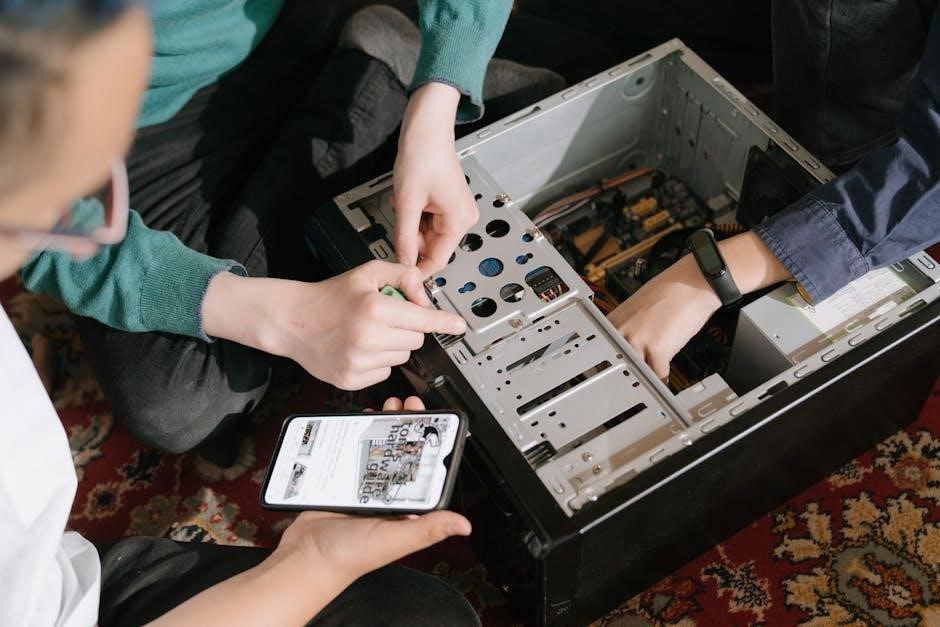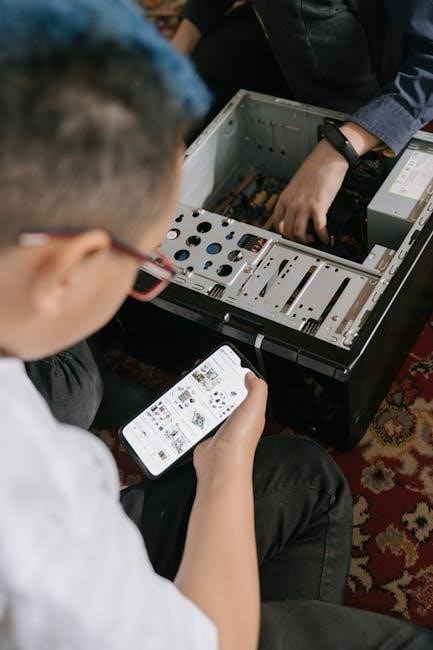The Order of the Eastern Star is the world’s largest fraternal organization open to both men and women. Affiliated with Freemasonry, it emphasizes charity, truth, and loving kindness. The five-pointed star, symbolizing the Star of Bethlehem, guides members toward personal growth and fellowship.

1.1 Definition and Overview

The Order of the Eastern Star (OES) is the world’s largest fraternal organization that admits both men and women. It is closely affiliated with Freemasonry, though it maintains its own distinct identity and purpose. The Order is based on biblical teachings and emphasizes principles of charity, truth, and loving kindness. Its emblem, the five-pointed star, symbolizes the Star of Bethlehem and serves as a guiding symbol for its members.
The OES is open to individuals with a Masonic connection, such as relatives of Master Masons, and offers a unique system of five degrees. These degrees—based on biblical heroines Adah, Ruth, Esther, Martha, and Electa—provide moral and ethical lessons to its members. The organization is neither a religion nor a secret society, focusing instead on personal growth, fellowship, and community service.
The Order’s structure includes local chapters, which conduct meetings and rituals. These gatherings often involve educational resources, such as study guides, to deepen members’ understanding of its teachings. The OES study guide, in particular, serves as a valuable tool for new and experienced members alike, offering insights into the Order’s history, symbolism, and principles.
By combining fraternal bonds with charitable efforts, the Order of the Eastern Star fosters a supportive environment for its members to grow spiritually and contribute to society.
1.2 Historical Background
The Order of the Eastern Star was founded in the mid-1800s by Dr. Rob Morris, a Freemason, and his wife, Charlotte Morris. The first chapter, known as the Grand Chapter of the Eastern Star, was established in 1855 in the United States. The Order was created to provide a fraternal organization where both men and women could participate together, emphasizing moral and ethical values.
Initially, the OES was closely tied to Freemasonry, with membership limited to individuals with a Masonic connection. Over time, the Order evolved, adopting its own rituals and structure while maintaining its Masonic roots. The organization grew rapidly, and by the late 1800s, it had spread internationally, establishing chapters across the globe.
The Order’s early development was influenced by biblical teachings, with its five degrees based on the lives of prominent women from the Bible. This unique approach set it apart from other fraternal organizations of the time. The OES also became known for its charitable work, supporting local communities and fostering a sense of brotherhood and sisterhood among its members.
Today, the Order of the Eastern Star remains a vital fraternal organization, blending tradition with modern values. Its historical roots continue to shape its mission and activities, making it a cornerstone of community service and personal development for its members worldwide.

Membership and Structure

Membership in the Order of the Eastern Star is open to men and women with a Masonic connection. The organization is structured into local Chapters, each governed by elected officers. Members participate in charitable and fraternal activities, fostering a sense of community and shared purpose.
2.1 Membership Requirements and Application Process

To become a member of the Order of the Eastern Star, one must have a Masonic connection, typically as a relative of a Master Mason in good standing. Women must be related to a Mason by blood or marriage, while men must be Master Masons themselves. Prospective members must express a genuine interest in the Order’s principles of charity, truth, and loving kindness. The application process begins with submitting a petition to a local Chapter, which is then reviewed and approved by the Chapter’s members. A background check may be conducted to ensure eligibility. Once approved, the candidate undergoes an initiation ceremony, known as the “initiation,” which introduces them to the Order’s teachings and symbolism. Membership is not restricted by religion, race, or creed, making it an inclusive fraternal organization. The process is designed to ensure that new members align with the Order’s values and are committed to its charitable and educational mission. A study guide is often provided to help candidates prepare for membership and understand the obligations and privileges of joining the Order of the Eastern Star.
2.2 Officers and Their Roles
The Order of the Eastern Star is governed by a structured hierarchy of officers, each with distinct responsibilities. A Chapter typically has 18 elected officers, including the Worthy Matron and Worthy Patron, who serve as the leaders of the Chapter. The Worthy Matron presides over meetings and ensures the Chapter’s activities align with its principles, while the Worthy Patron supports her and assumes leadership in her absence. Other key officers include the Associate Matron and Associate Patron, who assist in ritualistic work and Chapter management; The Secretary and Treasurer handle administrative duties, such as record-keeping and financial management. Additional officers like the Conductress and Associate Conductress guide candidates through initiation ceremonies. Each officer plays a vital role in maintaining the Chapter’s operations and upholding its charitable and educational mission. Officers are elected annually, and their roles are outlined in the Order’s study guide to ensure continuity and effective governance. This structured leadership ensures the Order’s objectives of charity, truth, and loving kindness are consistently met.
Symbolism, Rituals, and Educational Resources
The Order of the Eastern Star uses the five-pointed star as its emblem, symbolizing the Star of Bethlehem. Rituals include initiation ceremonies and meetings with specific signs and passes. Educational resources like the study guide provide insights into symbolism, teachings, and preparation for exams.
3.1 Key Symbols and Their Significance

The Order of the Eastern Star is rich in symbolic imagery, with the five-pointed star being its central emblem. This star represents the Star of Bethlehem, symbolizing guidance, hope, and divine light. The star is divided into five points, each corresponding to a virtue: Charity, Truth, Loving Kindness, Brotherly Love, and Relief. These virtues form the moral foundation of the Order.
The Bible is another key symbol, placed centrally in meetings to emphasize its importance as a source of moral and spiritual guidance. Rituals incorporate specific symbols like the sword and veil, representing protection and purity, and the crown and scepter, signifying leadership and wisdom. Numbers also hold symbolic meaning, with the numbers 3, 5, and 7 frequently used to convey deeper truths and organizational structure.
These symbols are integral to the Order’s teachings and rituals, helping members connect with its principles and values. They serve as reminders of the Order’s mission to foster personal growth, fellowship, and service to others.
3.2 The Study Guide and Additional Resources
The official Study Guide of the Order of the Eastern Star is an essential resource for members seeking to deepen their understanding of the organization’s teachings, rituals, and symbolism. This comprehensive guide provides detailed explanations of the Order’s principles, such as charity, truth, and loving kindness, and offers insights into its historical background. It also includes sections dedicated to the roles of officers, the significance of key symbols, and the importance of numerical patterns like the numbers 3, 5, and 7.
Additional resources, such as flashcards and study aids, are available online through platforms like Quizlet, helping members memorize important terms and concepts. The guidebook also serves as a valuable tool for new initiates, offering clarity on the initiation process and its symbolic meaning. Furthermore, it encourages members to engage actively with the Order’s mission by participating in meetings and charitable activities. By utilizing these resources, members can enhance their involvement and foster a deeper connection to the Order’s values and traditions.
























































